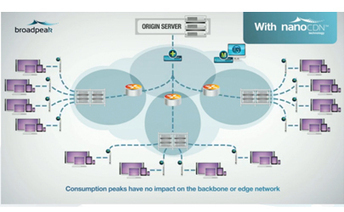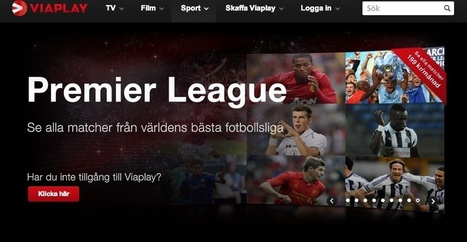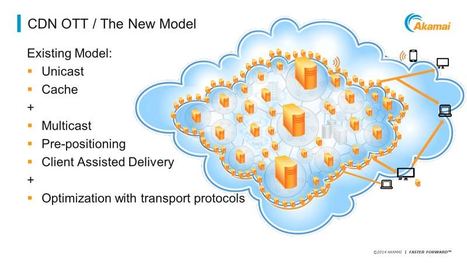As we reported previously, the Broadpeak solution introduces very lightweight clients into the home router/gateway and these intercept the unicast stream requests made by a tablet or smartphone to an origin server. The client looks for a multicast stream of the linear content instead. The platform operator works with a content owner to make the most popular channels available in multicast, perhaps during peak times or for popular shows or live sports, or even 24/7. The nanoCDN client receives this multicast stream instead, then converts it to unicast ABR (adaptive bit rate) inside the home so it can be watched on the multiscreen devices without any changes to their apps.
By replacing multiple unicast streams with a single multicast stream in the broadband network, nanoCDN reduces the bandwidth demands for linear/live video. nanoCDN is pioneering because of the way it harnesses multicast within a CDN environment and because it makes in-home devices an extension of the CDN.



 Your new post is loading...
Your new post is loading...








![Les nouvelles frontières de la diffusion OTT : Multicast & P2P [Conférence OVFSquad] | Video Breakthroughs | Scoop.it](https://img.scoop.it/pOujM-JuMKqsNZVy_hdtAjl72eJkfbmt4t8yenImKBVvK0kTmF0xjctABnaLJIm9)
![Octoshape and Juniper Networks Collaborate For TV Quality Broadband Video Distribution Using Multicast [PR] | Video Breakthroughs | Scoop.it](https://img.scoop.it/an4DVsg3qCUtbx47NcjJqDl72eJkfbmt4t8yenImKBVvK0kTmF0xjctABnaLJIm9)






Role of nanoCDN to bring IPTV like service to OTT world..